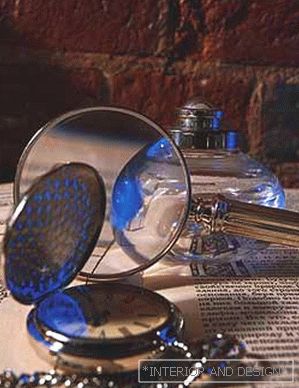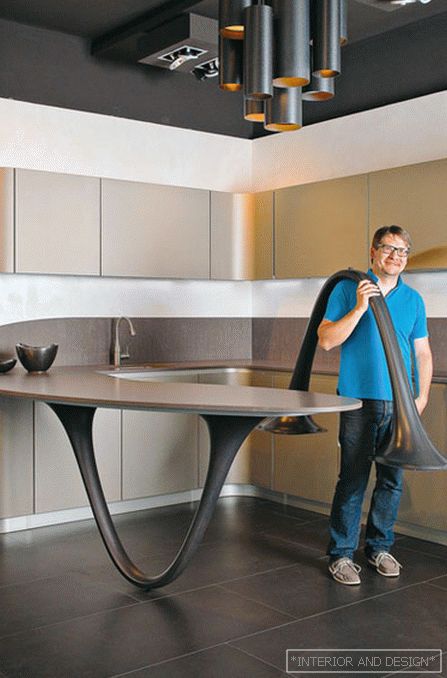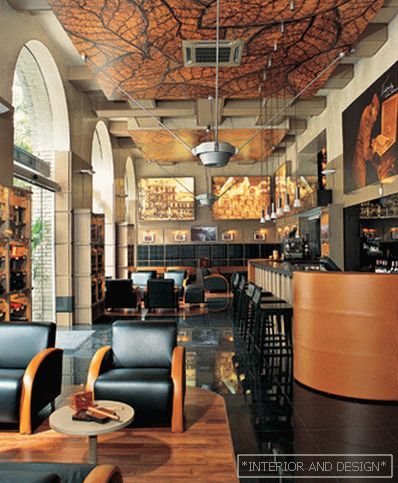The Texas bell, the Irish rose, the lysanthus ... What kind of names the eustoma flower of many years did not receive the favorite flower of gardeners and florists. Planting and maintenance done according to the rules, allow you to uncover the amazing potential of the plant. Its beauty buds, even in the photo, are not inferior to a rose, and there are so many of them on the stem that the queen of flowers is “resting” - one copy is enough to decorate a full-fledged bouquet.
Content
- 1 Features of growing eustoma as a perennial culture
- 1.1 Differences from one year old relative
- 1.2 How best to grow: in open field or in pots
- 1.3 When and how long does it bloom
- 1.4 For what climate is this plant suitable, on which soil it grows best
- 2 Popular varieties with photos
- 3 Planting methods: options for germinating seeds and sowing seedlings
- 4 Care for the flower in the garden from the moment of planting in open ground until autumn
- 4.1 How to care during growth and flowering
- 4.2 Care after flowering. How to prepare the plant for winter
- 4.3 What problems arise when growing eustoma?
Features of growing eustoma as a perennial crop
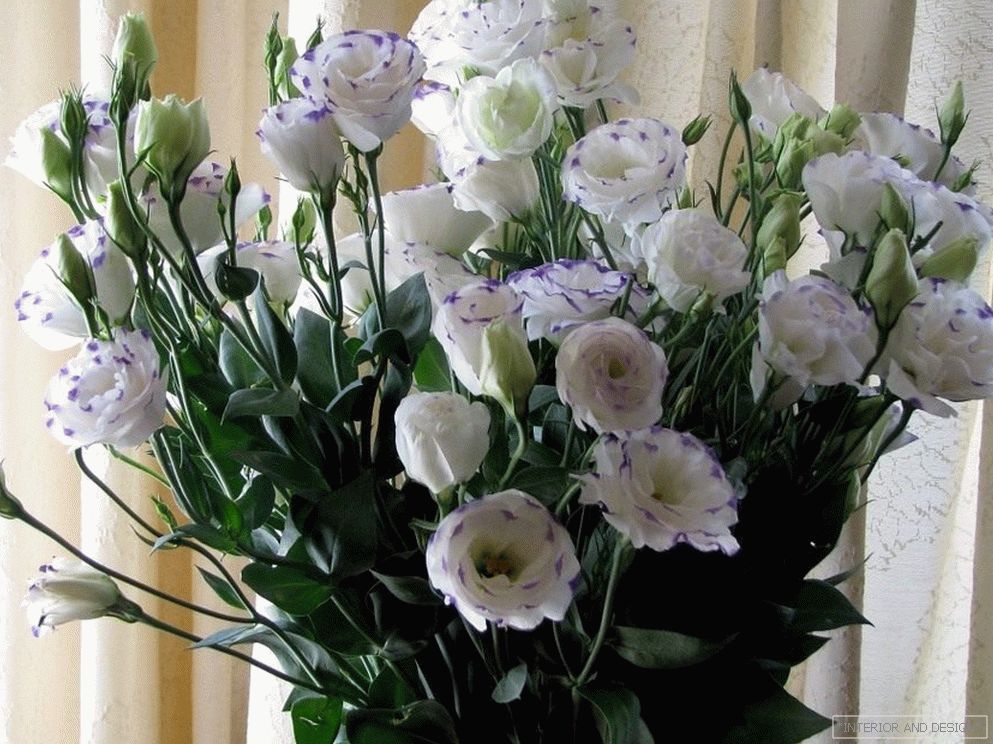
Eustoma прекрасно смотрится как в букете с другими цветами, так и сама по себе
Despite the fact that eustoma is called a perennial crop, gardeners in central Russia usually grow it as an annual. The problem is that the plant is very difficult to preserve in the autumn-winter period - at home (and this is the south of North America), eustoma is used to a mild climate, thanks to which it grows and blooms all year round in the wild, reproduces itself.
In Russia, on packages with eustoma seeds, as a rule, there is an indication: one-year or two-year plants can be obtained from them. Biennials (and in fact perennials) acquire flower growers who have reliable greenhouses in which the plant will be able to survive our harsh winters. In addition, a two-year eustoma is used as a houseplant, while in a flower pot on a windowsill, it can feel great not 2 years, but 4–5 years. If the gardener plans to place flowers in the open field, he chooses a one-year option.
Differences from one year old congener
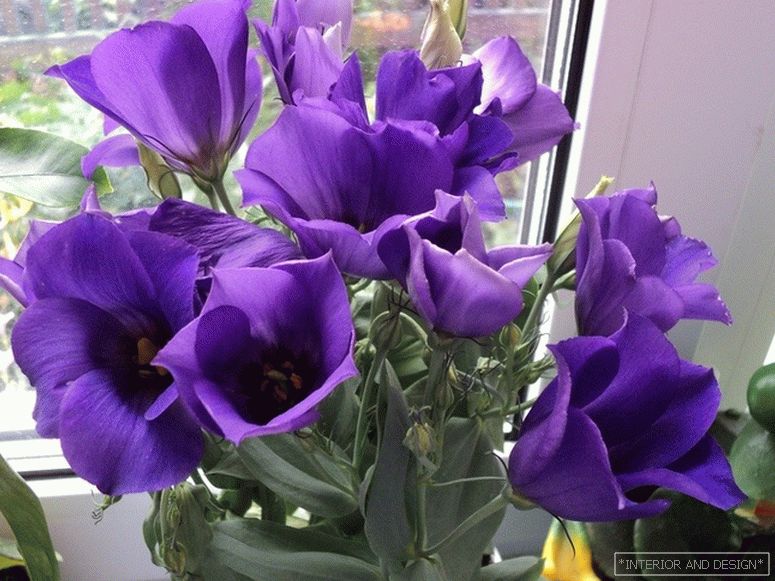
Eustoma varieties for home growing mass - for every taste!
Annuals most often - tall varieties, the length of the stems they have close to the meter. Perennials designed for indoor cultivation are short, 15–20 cm tall. However, this division is very conditional: depending on the grower's plans and for growing as annuals, dwarf flowers may be required.
Another significant difference between the two types of plants is that even a novice grower can easily cope with annuals. But to grow a two-year (long-term) copy in the garden is a person with a lot of experience. The flower requires special care during the growing season and competent preparation for the wintering and its conduct - even minor miscalculations can lead to the death of a delicate plant.
How best to grow: in open field or in pots
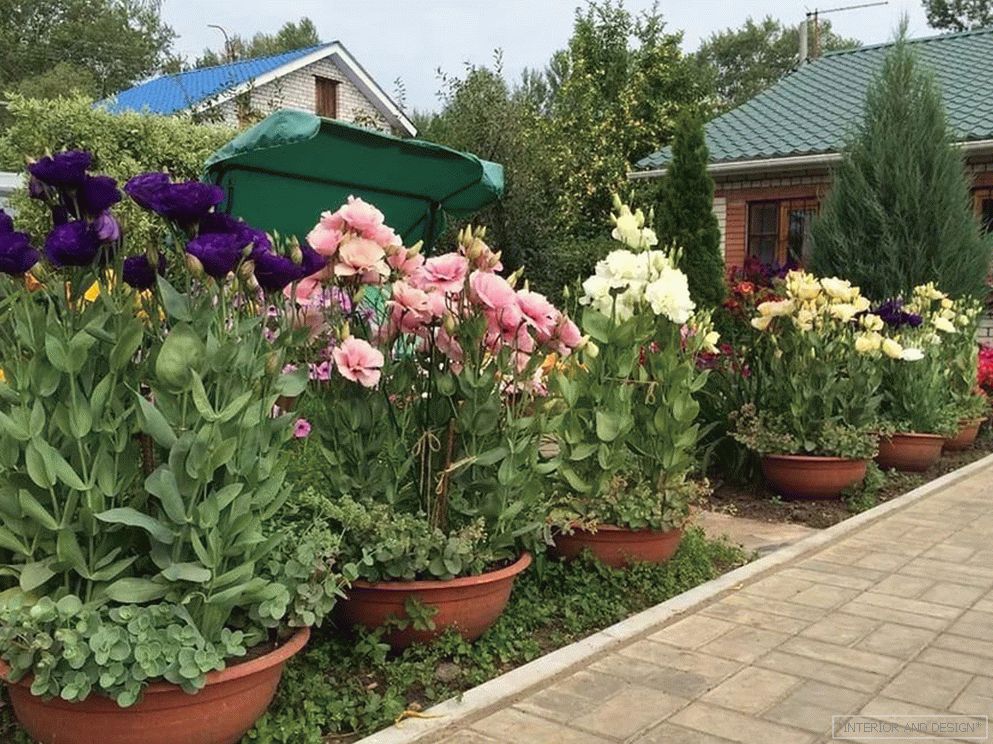
In landscape design, planting is used both in open ground and in pots
For a long time, Russian flower growers knew eustoma exclusively as a houseplant. Today it is grown in greenhouses, winter gardens, in flowerbeds. On Alpine hills, in mixborders, eustoma fits perfectly into the overall picture thanks to its long flowering: starting in mid-July, it continues in September. And if the weather allows, then during the first decade of October. A single plant can bloom for 4 months, gradually revealing bud after bud. If the flower is cut, it will grow from the root and in the southern regions even have time to bloom again, which, unfortunately, does not occur in the middle lane.
When and how long does it bloom
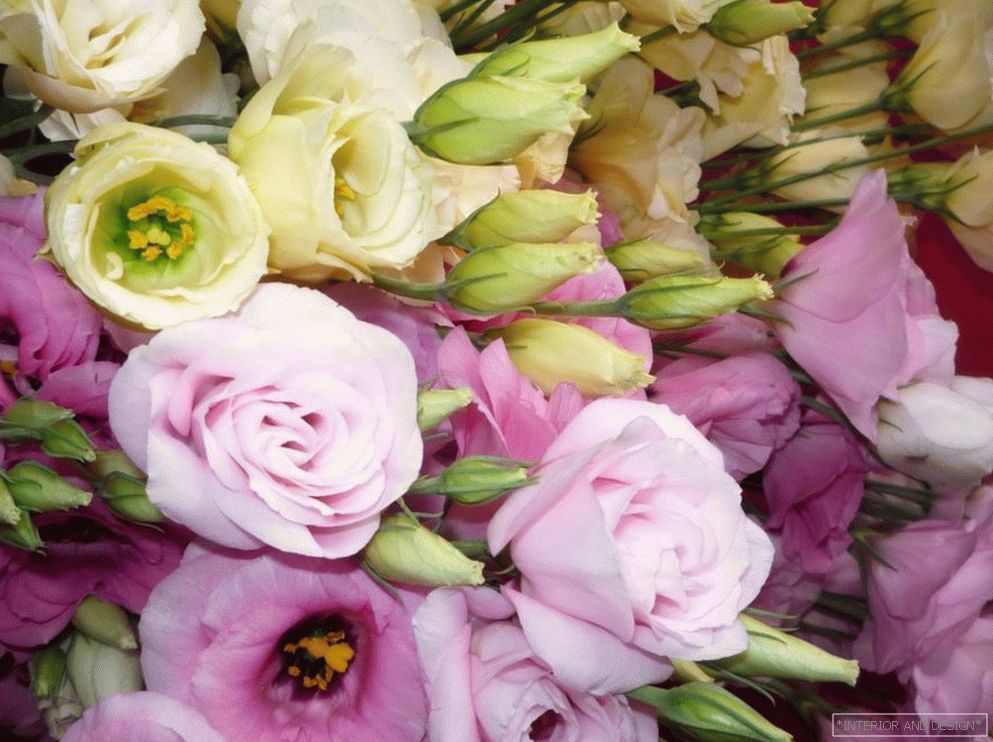
A flower bed with eustoma is prepared taking into account the timing of flowering of certain varieties
Terms of flowering can be adjusted:
- sow seeds in November or early December — eustoma will bloom in June (at the beginning or middle of the month);
- sow before the New Year - bloom in July;
- sowing in mid-January will provide flowering in August;
- sow in late January or early last month of winter - wait for flowering in September.
Eustoma tolerates light autumn frosts well. However, novice growers often make the mistake of starting to take care of the eustoma seedlings in the spring. In this case, the plant simply does not have time to bloom - if the buds are formed, they go under the snow.
Container planting, for which different containers are used - pots, tubs, helps to prolong the life of the plant and its flowering. While warm, they are kept outdoors, with the onset of cold weather - they are brought into the room. Flowering continues, although it becomes more modest.
An important point: experts recommend the use of light-colored containers so that in the summer, in the sun, there is no overheating of the roots - eustoma is very sensitive to this.
Container technology helps to preserve the rhizome of the plant during the winter in order to later plant it, already with new shoots, on a flowerbed. The disadvantage of this method is that flowering will not be as rich as usual.
What climate is suitable for this plant, on what soil it grows best
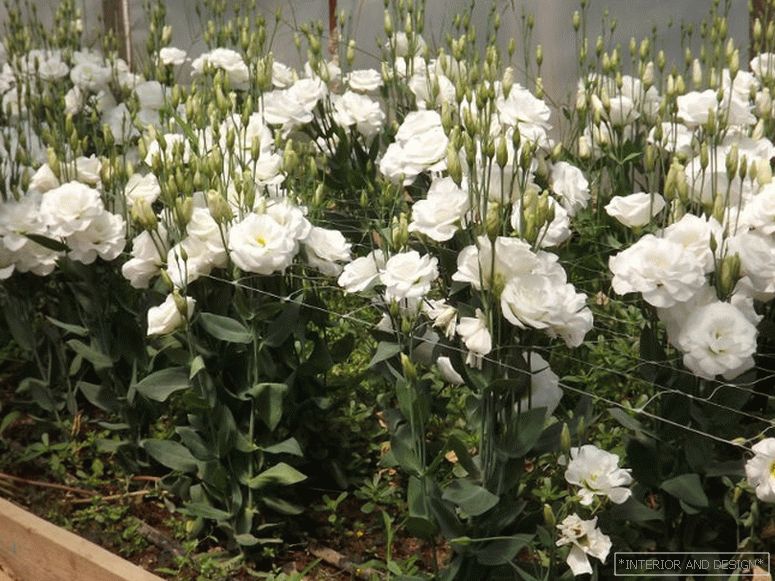
Of course, chernozem is fertile soil for most plants, but not everyone can provide such conditions.
The soil for eustoma should be:
- well (without large lumps) perekopannoy;
- drained, and therefore breathable;
- fertile (mineral fertilizers and compost are introduced into the soil);
- moderately humid, since excessive moisture may cause root rot;
As for the composition, the most suitable options are chernozem or a mixture of peat and humus in a 1: 1 ratio.
Since the eustoma plant is thermophilic, it feels more comfortable in the southern regions. In central Russia, temperatures are needed for its full growth and flowering: 20–25 ° С in the daytime and 15 ° С at night. In winter, it is advisable to keep the container with eustoma in a room where the temperature does not fall below + 10–12 ° С.
Popular varieties with photos
Breeders created about 60 varieties, unusual plants resemble not only a rose, but also poppy, double mallow, flowers of the lily family.
Popular tall varieties (with a stem length from 70 cm to 1.5 m):
- Flamenco - an early variety, the petals are light blue or yellow;

Flamenco Lime Eustoma Grade - a gentle addition to any bouquet of bright colors
- Echo - with large (6 cm in diameter) pink, lilac, white flowers;
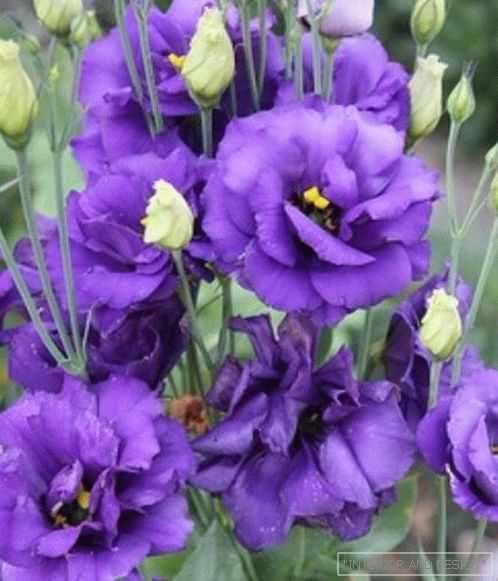
Eustoma Echo Blue - a bright focus on your flowerbed
- Mariachi Lime - with buttons salad color;

Eustoma Mariachi Lime Green — необычная гостья на рабатке или клумбе, зелёный оттенок красиво смотрится в общей массе
- Cinderella - with pink or yellow flowers.
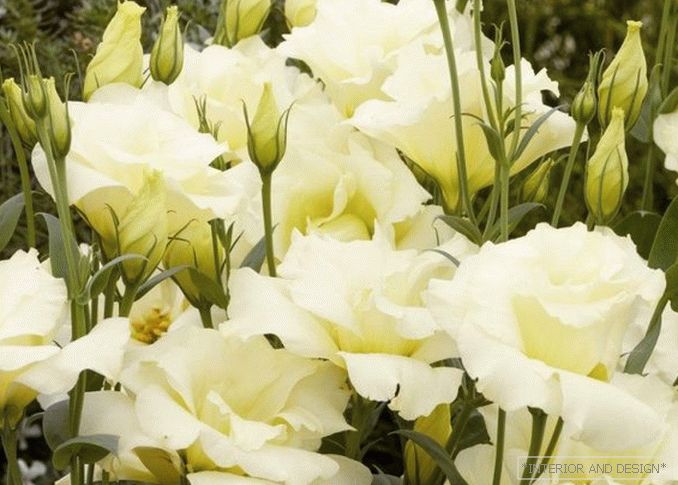
Grade Cinderella - classic soft beige color, perfectly complement the romantic bouquet
Low-growing varieties (with a length of the stem from 12 to 20 cm):
- Sapphire - with white buds blue edge;
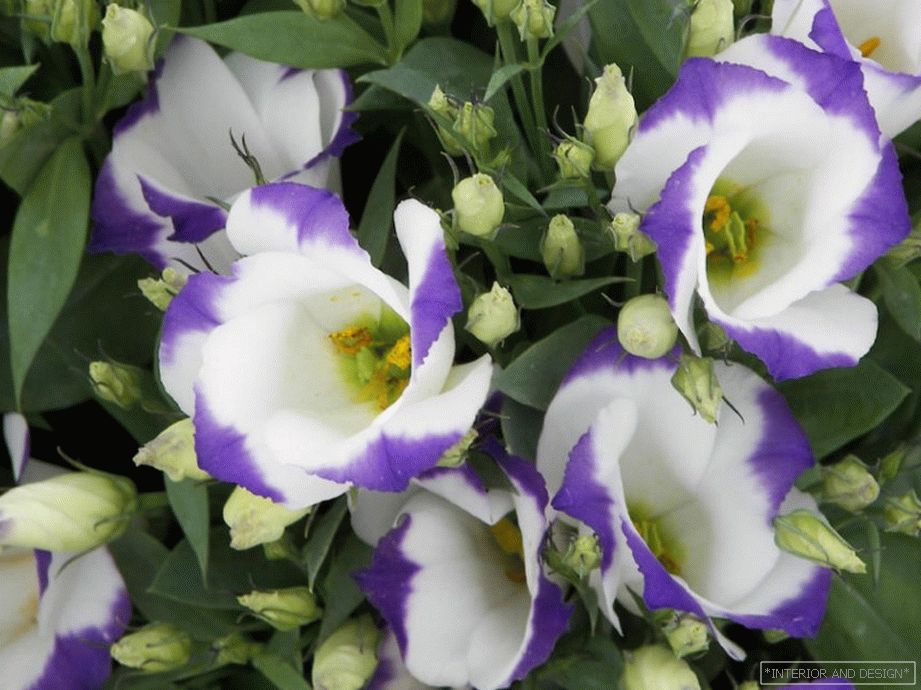
Eustoma Sapphire Blue Chip - an interesting idea for rabatok in the blue-blue range
- Terry Rosie - with blue or pink flowers;

Terry lisantus varieties can compete with roses
- Riddle - a semi-terry variety with pale blue buds;
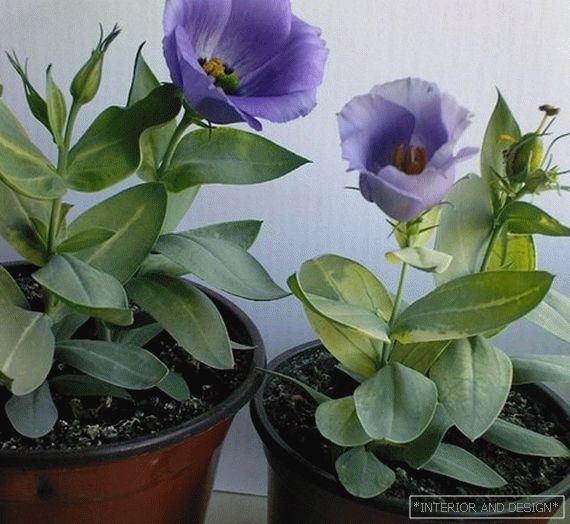
Eustoma varieties Riddle смотрится великолепно в комбинации с низкорослыми цветами других видов
- Tenderness - with pink satin petals.
Planting methods: options for germinating seeds and sowing seedlings
Growing seedlings is the only opportunity to decorate the garden with flowering eustomas, since the growing season of this crop lasts a long time, almost half a year. The optimal period for sowing seeds are the months from November to February.
It is important to choose the right ground. It is best to buy it in a specialty store, it should be designed for flower crops (Saintpaulia, violets) - loose, diluted with a coconut substrate or vermiculite (this material has many natural growth elements, it has an ideal structure for small seeds, due to which the soil does not blend and its surface is not shackled with a moisture-proof crust). If the soil is prepared independently, then its components should be:
- peat,
- sand,
- garden land,
- humus from the bark.
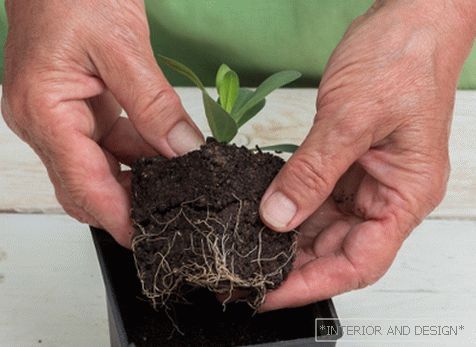
Getting eustoma seedlings is a long process
Sow seeds in cassettes (two seeds in each cell) or peat pots. At the time of sowing, the temperature in the room should be 20–21 ° C, dropping at night to 15 ° C. If temperatures are higher, the plants will form incorrectly.
Here's how to sow:
- At the bottom of the tank fill the clay as a drainage layer.
- On the claydite placed soil substrate. It is impossible to fill the container to the brim - the soil surface should be below a centimeter by
- Seeds are poured on a moistened soil, gently pressing into the soil, but not sprinkling with earth.
- Capacity is closed with glass or film, not forgetting to provide ventilation holes.
If the coated seeds are used, they are pre-soaked in water so that the casing is swollen, and then transferred to the ground with a toothpick. The same "tool" is used to slightly break the shell and facilitate the process of germination.
As for the quality of seed, the germination rate of 60% is considered very good by specialists.
The main troubles are waiting for the grower in one to two weeks, when shoots will appear. First of all, plants for normal development will require good lighting (but direct sunlight is undesirable). If there are not enough bright window-sills in the house, you will have to organize an artificial lighting.
To protect the plants from diseases, they are sprayed with "Fitosporin", and for more active growth - with the preparation "Zircon".
Watering at first is better to replace with spraying, since large drops of water, hitting the leaves, can cause disease. For the same reason, excess condensate should be regularly removed from the film or glass protecting the plants. Water for irrigation (spraying) must first be settled. The condition of the soil should be regularly checked - it is impossible that it becomes dry, but excessive moisture is dangerous.
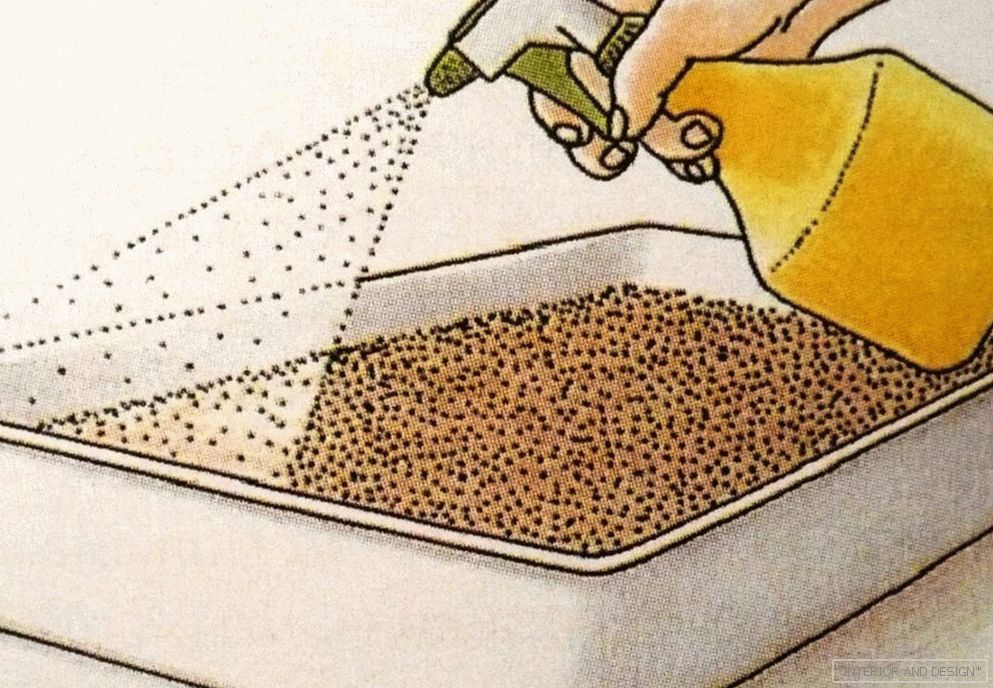
To preserve germination, do not water the first time, but spray the ground with seeds.
Well, if the air is humid in the room. If it is too dry, as often happens in apartments in winter as a result of the heating system, then eustoma will wither and may die. To avoid this, you must use the devices, humidifiers.
As the flower grows, it will require hardening procedures - for 10 minutes (and then longer) the film is removed. In a week - they leave it without film for the whole daylight hours, closing only for the night. Then remove the "protection" completely.
If the plants were sown in large containers, it is necessary (at the stage of the first leaves) to pick a pick in pots with peat. In mid-March (if it is intended to use the container flower on the garden plot), the plants are moved to a “permanent place of residence”, and this is done carefully, using a transfer method.
Advice: to those who in the garden affairs adheres to the lunar calendar, one should know that the eustoma seeds are considered as tight, therefore it is desirable to plant the seeds on the growing Moon.
Care of the flower in the garden from the time of landing in open ground until autumn
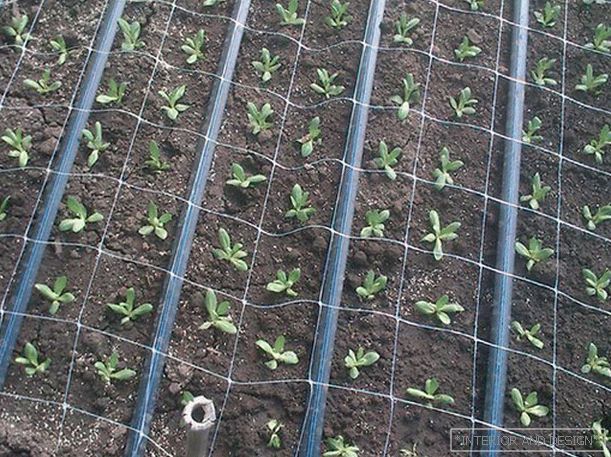
Seedlings need to be watered with cold water and try not to transplant from place to place.
Seedlings are best planted in the western or eastern part of the site where the sunlight is not too bright. Watering is required when the topsoil becomes dry. If the weather is cool, then watering is minimized as the risk of over-wetting the earth increases.
Replanting the plant is undesirable - it has too fragile roots. If such an operation is unavoidable, it is necessary to do it with all care, having dug up the plant with a large clod of earth.
The first additional feeding will be required by eustome in 2-4 weeks after transplanting in open ground, when the plant is thoroughly rooted. As a rule, it is a complex mineral fertilizer.
How to care during growth and flowering
Active growth of eustoma requires additional nutrition. When the green mass increases, there is a higher need for organic matter and nitrogen, when buds form and flowers bloom, potash and phosphate fertilizers are useful. Such drugs as Kemira and Kemira Lux promote lush blooming. Experienced growers recommend to slightly reduce the concentration of fertilizer in comparison with that indicated on the packaging, such are the preferences of eustoma, proven by many years of practice.
To protect the planting from powdery mildew and other misfortunes, you can use drugs Topaz, Topsin.

Self-seeding eustoma does not reproduce even in the southern regions of the country
Water used for irrigation is soft, defended. It does not need much, so the necessary stock, ready for use, can always be created.
Since the garden plots prefer tall varieties, support will be needed for flowers, especially during flowering, when it is difficult for a long stem to cope with ever-increasing loads.
Regular removal of faded buds is not only a decorative measure. Pruning is needed as an incentive for the formation of new inflorescences. Therefore, do not be afraid of cutting flowers into bouquets - in a month and a half you can count on a new “wave” of flowering.
Leaving after flowering. How to prepare the plant for winter
When eustoma is fading, a period of peace begins in its life - it almost stops growing, all life processes slow down. In order for the plant to rest, do not try to “cheer up” it with top dressing and watering. Moreover, if you plan to grow a flower as a perennial (this applies to regions with a warm climate), eustoma should be cut off most of the branches, keeping 2-3, no more tillering points.
In central Russia, it is possible to provide wintering for eustome by transplanting it into any container and placing it under a roof - on a balcony, loggia, in an economic building, where the air temperature does not fall below + 10 ° C.
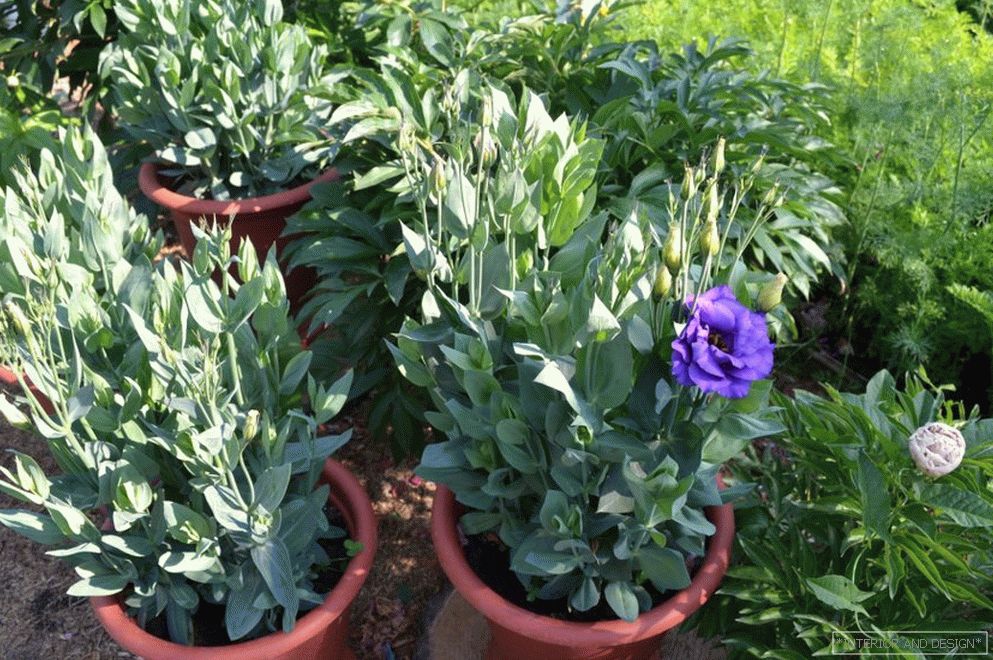
Potted eustomas are easier to bring into the house when cold weather comes
“Moving” from open ground to pot eustoma is not very easy going through, the plant may need to adapt for at least a month. It weakens and languishes due to a sharp change in temperature, dimming of light, therefore experts consider the best option to move at the end of summer - early autumn, when the temperature outside and indoors is almost the same. You should also adapt the flower for less illumination: put it first on the loggias, where the sun is smaller than outdoors, and then move to a room where the light is even less bright.
Unfortunately, even after a successful "housewarming" and competent care, eustoma will not become a classic perennial: its maximum is at best exhausted by 4-5 years, and from season to season the flowers will become smaller and their number will decrease significantly.
What problems arise when growing eustoma?
One of the most common problems in the care of long-term eustoma: the seeds are sown, but the germs have not appeared. Most likely, poor-quality planting material was used, or the seeds were too deeply buried in the soil and could not get up.
Plant problems can occur due to:
- bright sunlight;
- waterlogging (it causes fungal diseases);
- dry air;
- high acidity of the soil (eustoma prefers neutral);
- excess mineral fertilizers.
About troubles can signal sluggish or drying leaves and stems, falling buds Perhaps the culprit is one of these problems. Solve it - and the flower will begin to revive.
Often problems can be avoided initially. Inexperienced flower growers do not know this, but if the eustome is placed near walls and fences (brick, metal) that are heated under the sun, the plant can get burned. Therefore, plan the placement of landings correctly.
Eustoma is not the easiest flower in planting and care, but the feeling of celebration, which the opened buds give to its owner, pays for all the trouble. Moreover, a florist can always choose an option that is acceptable for him - to grow eustoma in a flower bed, in a winter garden, on a loggia and a balcony, or in an apartment on a windowsill. Even when cut, the flower retains its decorative effect much longer than many of its fellows.

